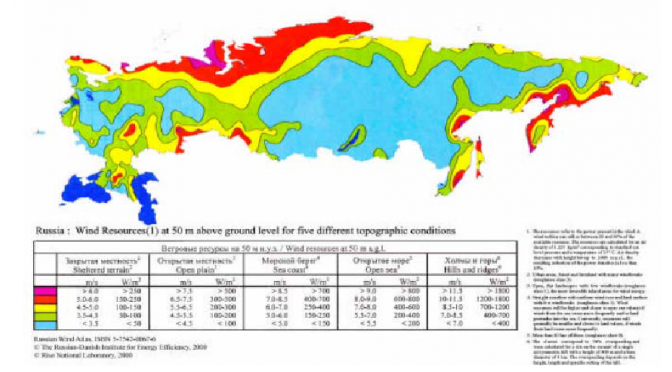Russia can increase the share of renewables in its energy mix from roughly 3 per cent today to more than 11 per cent by 2030, according to new findings by the International Renewable Energy Agency (IRENA). The growth in renewable energy use would represent nearly a fourfold increase in the share of renewables between 2014 and 2030. Renewable Energy Prospects for the Russian Federation, was presented to high-level stakeholders at a meeting today in Moscow, between the Ministry of Energy of the Russian Federation and IRENA.
“The global energy transition is underway, with this study we have a better understanding of Russia’s renewable energy potential, what benefits it could bring, and what can be done to make this a reality,” said IRENA Director-General Adnan Z. Amin. “Russia has had a long history of leadership in the energy sector – and now has the opportunity to extend that leadership into renewable energy.”
Russia has significant potential of all renewable energy sources, with large hydropower and bioenergy being the main sources of renewables in the country’s energy system today. By the end of 2015, total installed renewable power generation capacity reached 53.5 gigawatts (GW), representing about 20 per cent of the country’s total capacity, the majority of which lies in large hydropower.
“Further developing Russia’s rich and diverse renewable energy resources can significantly contribute to the country’s economic objectives such as economic growth and employment, diversify the energy mix, improve energy security and reduce energy supply costs in remote regions,” Mr. Amin added.
Under Russia’s current energy strategy the share of renewable energy will reach 4.9 per cent by 2030, falling short of its potential of more than 11.3 per cent, by IRENA’s estimates. According to the new working paper, the power sector is estimated to have the highest renewable energy share, at about 30 per cent in 2030 — split into 20 per cent for hydropower and 10 per cent for wind, solar photovoltaic (PV) and geothermal power.
In addition to hydropower and bioenergy, Russia has already taken steps to accelerate deployment of other renewable energy technologies. The country’s current renewable energy policy focuses on accelerating the deployment of wind and solar PV, and in 2016, approximately 70 megawatts of new renewable energy capacity was introduced.
To implement the study’s recommendations, an annual investment of approximately USD 15 billion per year between 2015 and 2050 is required, but IRENA shows that the benefits can exceed costs when externalities related to human health and climate change are considered. Renewables identified under REmap can save up to USD 8 billion per year by 2030, and additional benefits could include potentially exporting wind and hydropower to Asia, and biofuels to Europe — according to current estimates Russia has the largest wind potential in the world.
Renewable Energy Prospects for the Russian Federation is part of IRENA’s renewable energy roadmap programme, REmap, which determines the potential for countries, regions and the world to scale up renewables to ensure an affordable and sustainable energy future. The roadmap focuses not just on renewable power technologies, but also technology options in heating, cooling and transport. The Russian Federation study is the latest in the series of country-level REmap analyses, which includes countries such as China, Germany, Indonesia, Mexico and the United States.
The Russian Federation has set out to increase and diversify its use of renewables, particularly for power generation. Under current plans and policies, renewables would reach nearly 5% of total final energy consumption by 2030
Accelerated deployment, however, could boost Russia’s renewable energy share to more than 11% in the same timeframe, according to this REmap working paper from the International Renewable Energy Agency (IRENA)
Achieving this potential calls for cumulative investments of USD 300 billion in renewable energy up to 2030, or on average USD 15 billion per year between 2010 and 2030. When externalities related to human health and climate change are taken into account, these investments in renewables could ultimately save up to USD 11 billion per year.
Yet certain areas require further attention. These include long-term planning, integration of renewables with existing plans, opening the way for solar PV and wind development, and ensuring reliable and affordable bioenergy supplies.
Hydropower – representing about a fifth of Russian power generation capacity – is currently the most prominent renewable source, along with bioenergy for heating in buildings and industry. By end of 2015, total installed renewable power generation capacity reached 53.5 gigawatts (GW) of which 51.5 GW came from hydropower., and the remainder 2 GW from bioenergy, wind, solar PV and geothermal.
The country analysis forms part of REmap, IRENA’s global roadmap to double renewables in the global energy mix.
See the working paper on Russia’s renewable energy prospects
Review the key findings in English and Russian
Find out more about REmap.
http://www.irena.org/DocumentDownloads/Publications/IRENA_REmap_Russia_paper_2017.pdf



